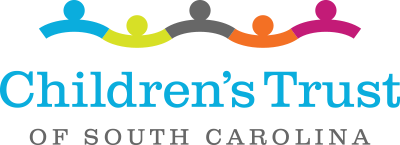What Is Child Abuse & Neglect in South Carolina?
Defining Abuse and Neglect in South Carolina
Know the legal context for how child abuse and neglect are defined in South Carolina.
Understanding the legal definitions of child abuse and neglect in South Carolina is essential for protecting children and supporting families.
In South Carolina, child abuse and neglect are defined under the South Carolina Children’s Code (Title 63 of the South Carolina Code of Laws). According to Section 63-7-20, child abuse or neglect refers to situations where a child’s physical or emotional health and welfare are harmed or threatened by the actions or inaction of a parent, guardian, caregiver or other relative. It may also indicate there is a substantial risk of harm, even if no harm has yet occurred. Abuse or neglect is willful or stems from a reckless disregard for the child’s well-being.
While South Carolina laws are more detailed, the following descriptions can help you understand how the state defines and measures child abuse and neglect. If you need specific advice, please consult a professional advisor.
The lists below do not encompass all signs; not every child will display these signs, and occasionally these signs may indicate other issues. When uncertain, report any suspicions of abuse and neglect to Law Enforcement or DSS.

Types of Child Abuse and Neglect
Physical Abuse
Physical abuse happens when a child experiences or is at significant risk of experiencing physical harm resulting from the actions of a parent, guardian, caregiver or other relative. This can include being hit, kicked, choked, thrown, pushed or whipped.
This could lead to marks, cuts, burns, blisters, scratches, broken bones, sprains, dislocated joints, lifelong injuries or death.
Emotional Abuse
Emotional or psychological abuse involves repeated actions by an adult or caregiver that harm a child’s emotional development or sense of self-worth. Abusive behaviors can include constant criticism, threats, rejection, dehumanizing language, ongoing shaming or humiliation, and isolation, such as withholding love, support or guidance.
It may lead to speech disorders, delays in physical development or failure to thrive, hyperactive and/or disruptive behavior; isolation, withdrawal, significantly increased attention to another sibling, developmental delays, phobias, sleep disorders, anxiety, destructive or anti-social behaviors, and suicidal thoughts or behaviors.
Sexual Abuse or Exploitation
Sexual abuse involves engaging or coercing a child into sexual activities, which includes fondling of genitalia, exposure to sexually explicit material, penetration, incest, rape, indecent exposure, and exploitation through prostitution or the creation of child pornography by a caregiver. It can also encompass exposing a child to sexual acts or material. These acts are classified as abuse, regardless of whether they are perpetrated by a caregiver or another individual, and even if permitted by the caregiver.
Signs may include difficulty walking or sitting, torn, stained or bloody underclothing; pain, swelling or itching in the genital and/or anal area; pain during urination; bruises, bleeding or lacerations in the genital and anal areas; venereal disease; withdrawal; or displaying sexual behaviors that are not typical for the child’s specific developmental stage.
Neglect
Neglect occurs when a parent or guardian is able but fails to provide for a child’s basic needs. This can involve not meeting physical, medical, educational or emotional requirements. According to South Carolina law, this includes:
- Failing to supply adequate food, clothing, shelter or supervision
- Failing to provide necessary medical or remedial care
- Abandoning the child or failing to protect them from serious harm
It is important to note that poverty alone does not constitute neglect. A lack of resources, in the absence of willful or reckless disregard, does not meet the legal definition of neglect.
Possible signs include being underweight, having poor growth patterns, and experiencing failure to thrive; inappropriate clothing, persistent hunger and poor hygiene; consistent lack of supervision; neglected physical and medical problems and needs; inadequate access to proper medical or mental health services; significantly high school absences; and abandonment.
Source: www.dss.sc.gov ›

